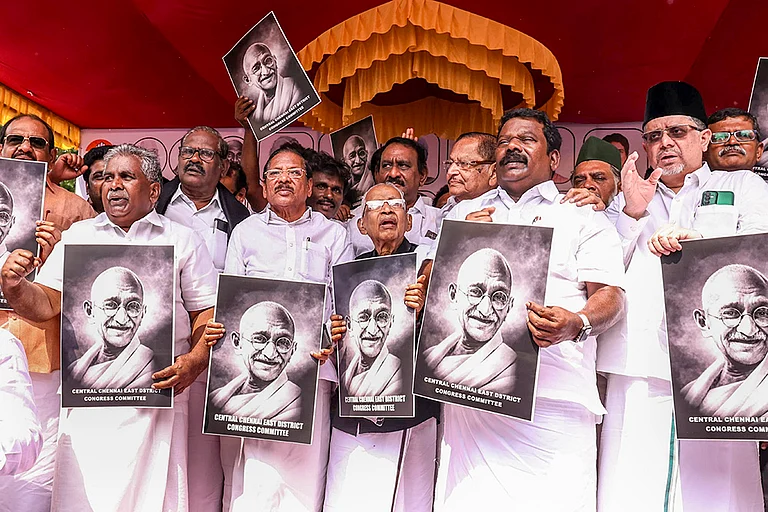Winds gusting up to 18 kilometres per hour barrelled through the national capital on Monday but a high share of emissions from farm fires in Punjab kept the air quality in the "very poor" category.
Delhi's 24-hour average air quality index (AQI) stood at 303 on Sunday, as was on Saturday. It was 346 on Friday and 295 on Thursday. An AQI between 201 and 300 is considered "poor", 301 and 400 "very poor", and 401 and 500 "severe".
The city recorded a minimum temperature of 12.6 degrees Celsius and a maximum of 28.2 degrees Celsius. Officials at the India Meteorological Department (IMD) said winds gusting up to 18-20 kmph barrelled through the city during the day.
But that did not lead to any improvement in air quality as the impact of stubble burning on Delhi's pollution rose amid favourable transport-level wind speed and direction. According to data from the Indian Agricultural Research Institute (IARI), farm fires in Punjab dipped from 2,467 on Saturday to 2,175 on Sunday.
However, their share in Delhi's PM2.5 pollution increased from 17 per cent on Saturday to 24 per cent on Sunday, according to SAFAR, a forecasting agency under the Ministry of Earth Sciences.
The Centre's air quality panel had Friday said curbs under stage 3 (severe) of the Graded Response Action Plan (GRAP) will continue in Delhi-NCR as the air pollution in the region is showing an upward trend.
All construction and demolition work, except for essential projects, is banned in Delhi-NCR under the third stage of the GRAP. Brick kilns, hot mix plants and stone crushers are also not allowed to operate.
However, the data from the Decision Support System of the Indian Institute of Tropical Meteorology showed that "biomass burning" was the top contributor to air pollution in Delhi-NCR on Saturday and Sunday.
With air pollution ameliorating in Delhi, the CAQM had on Sunday directed authorities to lift the curbs imposed under stage 4 of the GRAP, including a ban on plying of non-BS VI diesel light motor vehicles in the region and the entry of trucks into the national capital.
The CAQM order recommending the restrictions was issued on Thursday. The Delhi government had also shut primary schools and ordered 50 per cent of its staff to work from home last week. However, the directions were rescinded following an improvement in air quality.
According to an analysis conducted by the Delhi Pollution Control Committee last year, people in the national capital breathe the worst air between November 1 and November 15 when stubble burning peaks and winters set in.
The Air Quality Life Index (AQLI) released by the Energy Policy Institute at the University of Chicago in June showed that residents of Delhi stand to lose 10 years of life expectancy due to poor air quality.
(With PTI Inputs)


























